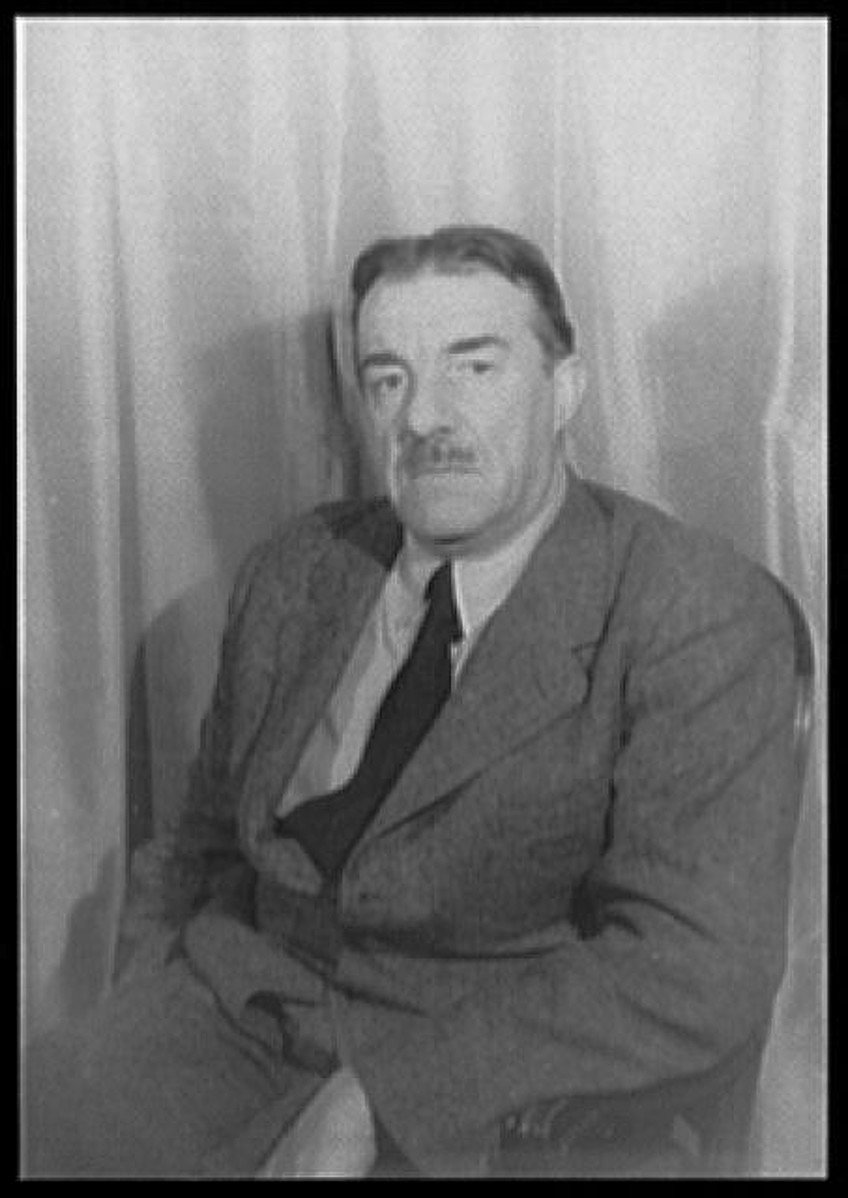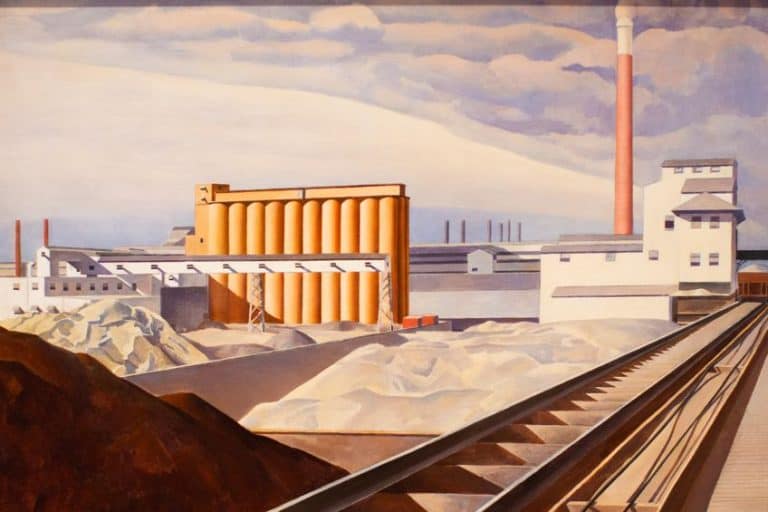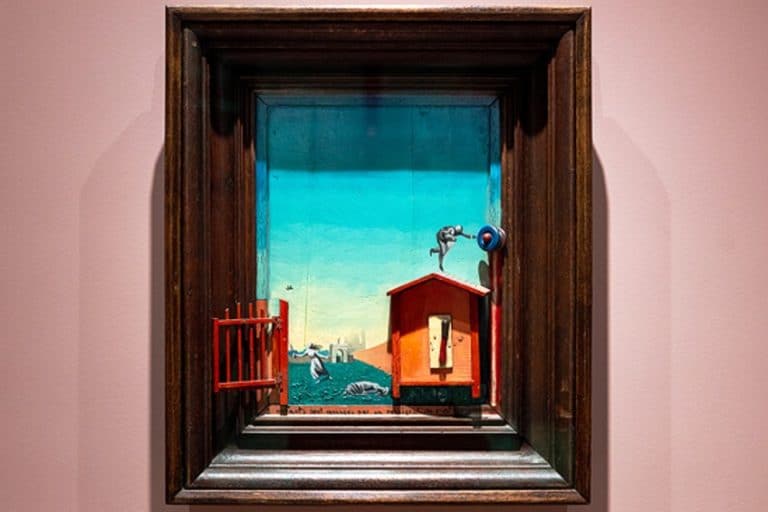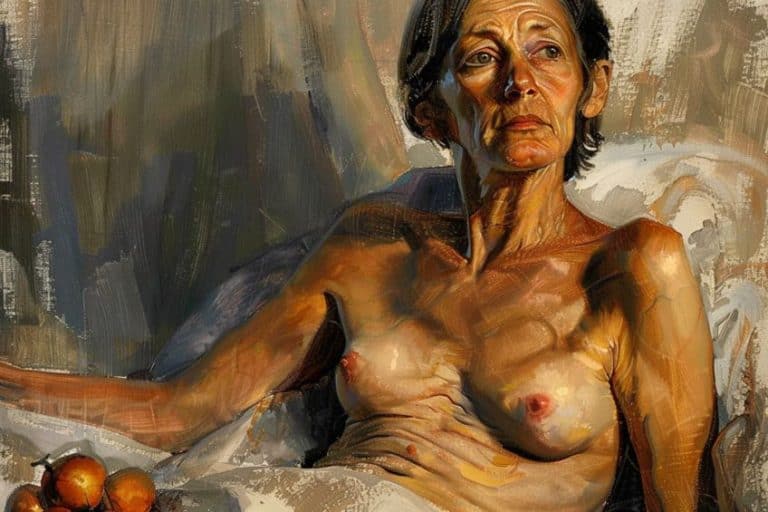“Nudes in the Forest” by Fernand Léger – Modernism in Nature
Nudes in the Forest is a notable painting by the French artist Fernand Léger, created between 1909 and 1910. As one of Léger’s early masterpieces, it exemplifies his transition from Impressionism to Cubism, showcasing his unique approach to form and color. The painting features a group of stylized nudes set against a backdrop of abstract and geometric foliage, reflecting Léger’s fascination with the mechanical and the human figure. Nudes in the Forest is celebrated for its innovative use of bold, contrasting colors and fragmented shapes, which together create a dynamic and rhythmical composition. This work marks a significant moment in Léger’s career and in the development of modern art, illustrating the synthesis of natural elements and modernist abstraction.
Key Takeaways
- Nudes in the Forest reflects Léger’s unique Cubist style and industrial themes.
- Created between 1909 and 1910, it marks a pivotal moment in Léger’s career.
- The painting is housed at the Kröller-Müller Museum in the Netherlands.
Historical Context and Reception
| Artist | Fernand Léger (1881 – 1955) |
| Date Created | 1909 – 1910 |
| Medium | Oil on canvas |
| Genre | Modern Art |
| Period/Movement | Cubism |
| Dimensions (cm) | 120 x 170 |
| Series/Versions | None |
| Where Is It Housed? | Kröller-Müller Museum, Otterlo, Netherlands |
| What It Is Worth | Estimated at $22 million (value as of recent assessments) |
Fernand Léger’s Nudes in the Forest represents a significant milestone in the artist’s career and the broader Cubist movement. Created between 1909 and 1910, this painting showcases Léger’s personal style, often called Tubism, characterized by cylindrical shapes and vivid colors. Nudes in the Forest reflects Léger’s optimism about industrialization and modern life, making it a unique piece within the scope of early 20th-century art. Léger, born in rural Normandy, initially trained in architecture but eventually gravitated towards painting. His distinctive approach diverged from traditional Cubism, emphasizing bold forms and a mechanical aesthetic.
The artwork’s composition, with its fragmented forms and dynamic interplay of shapes, illustrates Léger’s fascination with modernity and industrial elements. Displayed at the Kröller-Müller Museum in Otterlo, Netherlands, Nudes in the Forest continues to captivate art enthusiasts and scholars alike. This piece not only highlights Léger’s innovative techniques but also his perspective on the evolving industrial world around him. Exploring this artwork gives insight into Léger’s impact on modern art and his legacy within the Cubist movement.
The Role of Nudes in the Forest in Art History
Fernand Léger’s work fell into the period when Impressionism was fading, and new avant-garde movements were rising in Europe. Nudes in the Forest introduced his unique Cubist style, known as Tubism. Unlike traditional Cubism, which frequently used geometric shapes, Léger emphasized cylindrical forms. This painting bridged the gap between Impressionism and more modern forms of art, showcasing a mechanical understanding of volume. The artwork is currently housed at the Kröller-Müller Museum in Otterlo, the Netherlands, positioning it as a piece of historical and cultural significance.
Léger’s Impact on Early 20th Century Art
Léger’s Nudes in the Forest greatly influenced early 20th century art, blending industrial themes with human forms. His involvement with the Communist Party informed his optimistic views on industrialization, reflecting the rapidly developing world around him. By moving away from the soft palettes of earlier movements, Léger opted for tones of grey, creating a stark and impactful visual. This approach, along with his focus on volume and mechanism, helped shape Cubism, making him a central figure in Paris, then the heart of the European art scene.
His work championed the new aesthetics of the modern era, leaving a lasting impact on contemporary and future artists.
Analysis of Nudes in the Forest
Fernand Léger’s Nudes in the Forest is a striking example of early Cubist art. This piece uses geometric shapes, bold colors, and unique compositions to challenge traditional representations of space and form.
Exploration of the Cubist Composition
Nudes in the Forest demonstrates Léger’s distinctive Cubist style, often referred to as Tubism. Unlike other Cubists who focused on fragmented spaces, Léger employed cylindrical forms, giving his work a more structured and almost mechanical appearance. The painting’s composition is marked by interlocking forms and lines, creating a dynamic interaction between the figures and the surrounding environment. This geometric arrangement reflects Léger’s interest in modernity and industrialization. The nudes are composed of simplified, tubular shapes that blend into the abstracted background. The use of straight and curved lines creates a sense of movement and fluidity, leading the viewer’s eye through the piece while maintaining focus on the central subject.

Symbolism and Interpretation of Space
Léger’s portrayal of the nudes in a forest setting symbolizes the juxtaposition of natural and industrial elements. The figures, constructed from cylindrical forms, mirror the industrial world’s machinery, highlighting Léger’s optimism about human progress.
The forest, though abstracted, provides a contrast to the human forms, symbolizing nature’s complexities versus the simplicity and order of human-made structures.
The spatial arrangement in this painting challenges traditional perspectives by flattening and breaking apart the elements. This disruptive interpretation of space conveys a modern, fragmented worldview. Each element, whether a tree or a human figure, occupies its own space yet interacts fluidly with others, emphasizing the interconnectedness of nature and human innovation.
Color Palette and Cylindrical Forms
The color palette of Nudes in the Forest is deliberate and striking. Léger employs a combination of bold primary colors and more subdued, earthy tones, creating a visual balance. The vibrant colors draw attention to the figures, while the muted background integrates seamlessly with the forest setting. This contrast enhances the distinction between the nudes and their environment.
Léger’s use of cylindrical forms is pivotal in this work. These forms not only define the figures but also contribute to the structural integrity of the composition. The tubular shapes punctuate the canvas, providing a rhythmic flow and emphasizing the mechanical nature of the figures. This technique underscores Léger’s unique approach within the Cubist movement, setting his work apart from his contemporaries.
Nudes in the Forest in the Modern Era
Fernand Léger’s Nudes in the Forest remains a significant piece in understanding the evolution of Cubism and modern art. This section highlights its exhibitions and its lasting impact on art and culture.
Exhibitions and Location
Nudes in the Forest has been displayed in several prestigious museums. Notably, it is a prominent piece in the Kröller-Müller Museum in Otterlo, Netherlands. This museum is known for its extensive collection of fine art, and Léger’s work stands out due to its distinctive Tubism style. The painting is often featured in modern art exhibitions that explore the development of Cubism and its influence on later movements. Exhibits showcasing this piece highlight Léger’s optimism towards industrialization and modern life.
These exhibitions help visitors understand the roots of Pop Art and other 20th-century artistic trends.
Relevance and Legacy
Nudes in the Forest plays a crucial role in art history, particularly in the context of modern art. Léger’s unique approach to Cubism, known as Tubism, influenced many subsequent artists. His work bridged the gap between early Cubism and later movements, emphasizing the geometric abstraction that became a hallmark of modern art.

The painting’s legacy extends beyond its stylistic contributions. It captures the industrial era’s essence, reflecting Léger’s fascination with machinery and urban life. As a result, Nudes in the Forest continues to be a reference point for discussions on the impact of industrialization on art and culture.
Nudes in the Forest stands as a pivotal work in the evolution of early 20th-century art. Through its groundbreaking blend of Cubist fragmentation and vibrant color palette, the painting highlights Léger’s innovative vision and his ability to merge natural forms with abstracted and mechanical elements. This piece not only marks Léger’s departure from traditional representation but also signals his contributions to the avant-garde movement. Nudes in the Forest remains a testament to Léger’s pioneering spirit and his enduring influence on modern art, inviting viewers to appreciate the harmonious interplay between human figures and abstract forms.
Frequently Asked Questions
What Is the Significance of Nudes in the Forest by Fernand Léger in Art History?
Nudes in the Forest marks Léger’s first major piece in the Cubist movement. It showcases his unique style, sometimes referred to as Tubism. This painting played a key role in moving away from traditional art forms and influenced future art movements, including Pop Art.
How Does Nudes in the Forest Exemplify Fernand Léger’s Mechanical Style?
Léger’s mechanical style is evident through the use of geometric shapes and bold lines. The figures in Nudes in the Forest are depicted with tubular forms and simplified shapes, emphasizing a machine-like quality. His approach reflects his interest in modern industrialization and technology.
What Was Fernand Léger’s Inspiration for Creating Nudes in the Forest?
Léger was inspired by the rapid industrialization and modern developments of his era. His optimism about these changes is reflected in the painting’s dynamic composition and mechanical forms. He aimed to capture the essence of modern life and its complexity through his Cubist lens.
How Does Nudes in the Forest Reflect the Cultural and Historical Context of Its Time?
The painting was created between 1909 and 1910, a period marked by industrial growth and technological advances. Léger’s work embodies the spirit of this era, celebrating progress and innovation. His use of Cubism was a response to the changing world around him, making “Nudes in the Forest” a cultural artifact of early 20th-century modernism.
Isabella studied at the University of Cape Town in South Africa and graduated with a Bachelor of Arts majoring in English Literature & Language and Psychology. Throughout her undergraduate years, she took Art History as an additional subject and absolutely loved it. Building on from her art history knowledge that began in high school, art has always been a particular area of fascination for her. From learning about artworks previously unknown to her, or sharpening her existing understanding of specific works, the ability to continue learning within this interesting sphere excites her greatly.
Her focal points of interest in art history encompass profiling specific artists and art movements, as it is these areas where she is able to really dig deep into the rich narrative of the art world. Additionally, she particularly enjoys exploring the different artistic styles of the 20th century, as well as the important impact that female artists have had on the development of art history.
Learn more about Isabella Meyer and the Art in Context Team.
Cite this Article
Isabella, Meyer, ““Nudes in the Forest” by Fernand Léger – Modernism in Nature.” Art in Context. June 6, 2024. URL: https://artincontext.org/nudes-in-the-forest-by-fernand-leger/
Meyer, I. (2024, 6 June). “Nudes in the Forest” by Fernand Léger – Modernism in Nature. Art in Context. https://artincontext.org/nudes-in-the-forest-by-fernand-leger/
Meyer, Isabella. ““Nudes in the Forest” by Fernand Léger – Modernism in Nature.” Art in Context, June 6, 2024. https://artincontext.org/nudes-in-the-forest-by-fernand-leger/.











